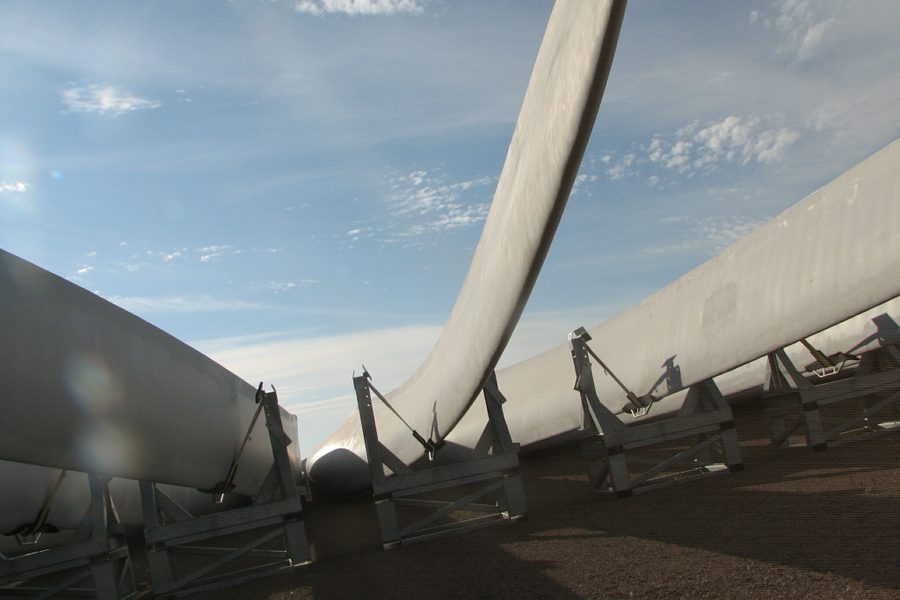
The United States is in a “clean energy arms race” with China, and countless “green jobs” are at risk if federal and state governments don’t get on the ball in creating incentives for renewable energy.
That’s how the group Clean Wisconsin describes the situation, as the state celebrates the announcement of a new wind turbine plant the Spanish company Ingeteam will open in Milwaukee. The facility will create 270 jobs; in January, the company received $1.66 million in tax credits for clean technology. Company officials said they chose Milwaukee in part because of the available skilled and Spanish-speaking workforce.
The manufacture of wind turbine components has been widely touted as a way to put skilled workers in America’s de-industrialized heartland back to work. But just as offshoring of the steel industry and other industries to Asia decimated the Midwest in decades past, labor and environmental advocates fear that China will corner the renewable energy manufacturing market.
As Clean Wisconsin said in a statement Monday:
China led the race to generate new wind power in 2009, more than doubling its capacity by bringing 13 gigawatts of new wind power onto the grid, according to data recently released by the Global Wind Energy Council.
This compares with the U.S.’s less than 10-gigawatt increase that represented a 39 percent increase from 2008. One gigawatt of wind capacity is enough electricity to power approximately 350,000 homes.
Wind turbine components are regularly shipped around the globe. At the Port of Duluth, near the Minnesota-Wisconsin border, I saw a vast field of graceful white turbine blades waiting for transport overseas. But theoretically, domestic demand should drive domestic production, given the cost of shipping such huge objects.
China is already a major manufacturer of solar panels, a process that often results in serious environmental contamination if there are not strict environmental regulations in place – another reason to push U.S. solar panel production with appropriate regulatory oversight. SunPower, a global leader in solar panel production, currently makes its panels in the Philippines, China and Mexico, but is planning a U.S. manufacturing facility soon.
Hence solar and wind industry manufacturing in the United States could be driven both with incentives to the actual producers – like the tax break to Ingeteam – and support for renewable energy through renewable energy portfolio (RPS) standards and other incentives.
The Wisconsin legislature is considering the Clean Energy Jobs Act and another bill (authored by Sen. Jeff Plale and Reps. Jim Soletski and Ted Zigmunt) that would add new technologies to those qualifying for the state’s existing renewable energy portfolio standards. The Clean Energy Jobs Act would also increase the amounts of renewable energy mandated by the state, to 20 percent by 2020 and 25 percent by 2025. Wisconsin’s existing RPS, passed in 2006, mandated 10 percent renewable energy by 2015.
Companies that would benefit and environmental groups in the state are pushing these bills as part of the “clean energy arms race.” Media reports said the bill would:
Create jobs, more than 1,800 in the first year, many of them construction jobs, according to new industry-recognized research. Economists and policy analysts estimate the package will create 800 to 1,800 new construction jobs per year through 2025 and more than 2,000 manufacturing jobs once the energy act provisions are fully implemented.
The bills would allow solar hot water heating, geothermal heating and “light pipe” technology to qualify as renewable energy. These are “direct use” forms of energy that, rather than generating electricity, directly heat water or rooms, create light or otherwise perform functions that would otherwise involve electricity, gas or oil.
Designating these technologies as eligible for renewable energy credits (RECs) that can be sold would provide a huge incentive for companies, utilities, government agencies and the like to adopt them. One company says the bills would create 1.4 million person-hours of work for “unemployed Wisconsites” just by installing their light pipes, which basically funnel or concentrate natural daylight into buildings to avoid electricity use.
Kari Lydersen is a Chicago-based journalist, author and assistant professor at Northwestern University, where she leads the investigative specialization at the Medill School of Journalism, Media, Integrated Marketing Communications. Her books include Mayor 1%: Rahm Emanuel and the Rise of Chicago’s 99%.







